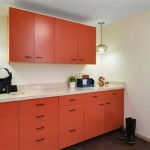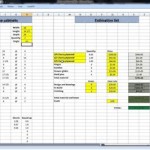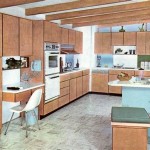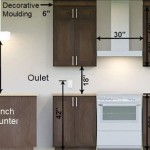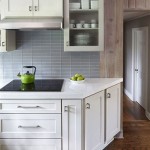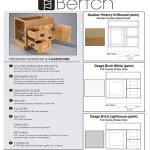Homemade Grease Remover for Kitchen Cabinets: A Comprehensive Guide
Kitchen cabinets, particularly those located near the stovetop, are notoriously susceptible to grease accumulation. Airborne oils and fats released during cooking settle on cabinet surfaces, forming a sticky, unsightly layer that can be difficult to remove with conventional cleaning methods. Commercial degreasers often contain harsh chemicals that may damage cabinet finishes or pose health risks. As a result, many homeowners seek effective and safe homemade alternatives for grease removal. This article provides a detailed guide to crafting and utilizing homemade grease removers for kitchen cabinets, focusing on formulations that are both effective and gentle.
Understanding the Nature of Grease and Its Adhesion
Grease, a complex mixture of animal fats, vegetable oils, and other organic compounds, is non-polar. This means it does not dissolve readily in water, a polar solvent. The adhesive properties of grease are further enhanced by its interaction with dust particles and cooking splatters, creating a stubborn film that bonds tightly to cabinet surfaces. Furthermore, the type of cabinet finish (e.g., painted, laminated, wood) influences how easily grease adheres and how resistant the surface is to cleaning agents. Understanding these factors is crucial in selecting the appropriate homemade grease remover and application method.
Over time, grease undergoes oxidation and polymerization, processes that cause it to harden and become more difficult to remove. High temperatures accelerate these reactions. This explains why grease near the stovetop tends to be more challenging to clean than grease further away. Therefore, regular cleaning is essential to prevent the buildup of hardened grease, making the task of removal much easier. A proactive approach, involving routine wiping with a mild detergent solution, can significantly reduce the need for intensive degreasing.
Before applying any cleaning solution, it is always advisable to test it on an inconspicuous area of the cabinet. This precaution helps to ensure that the solution does not damage or discolor the finish. Wait for a few minutes after applying the solution to the test area, then wipe it off and observe the results. If there is no adverse reaction, the solution can be safely used on the rest of the cabinets.
DIY Grease Remover Recipes: Ingredients and Preparation
Several readily available household ingredients can be combined to create effective homemade grease removers. These recipes typically leverage the properties of alkaline substances, which help to saponify (convert fats into soap) the grease, making it easier to dissolve in water. The effectiveness of each recipe may vary depending on the severity of the grease buildup and the type of cabinet finish.
Recipe 1: Baking Soda Paste
Baking soda (sodium bicarbonate) is a mild abrasive and a weak alkaline substance. Its gentle abrasive action helps to lift grease and grime without scratching most surfaces. This makes it a suitable option for painted or laminated cabinets, although caution should be exercised on delicate wood finishes.
To prepare a baking soda paste, mix baking soda with water until a thick, spreadable paste forms. The ratio is typically about three parts baking soda to one part water, but the exact amount can be adjusted to achieve the desired consistency.
Recipe 2: Vinegar and Water Solution
Vinegar (acetic acid) is a mild acid that can dissolve grease and cut through grime. White vinegar is generally preferred over other types of vinegar due to its lack of color, which reduces the risk of staining. However, vinegar should be used with caution on certain surfaces, such as marble and granite, as it can etch these materials.
A vinegar and water solution can be prepared by mixing equal parts white vinegar and water in a spray bottle. For heavily greased areas, a stronger concentration of vinegar can be used, but it is always advisable to start with a diluted solution and gradually increase the concentration as needed.
Recipe 3: Dish Soap and Hot Water
Dish soap is formulated to remove grease from dishes, making it an effective ingredient for cleaning kitchen cabinets. The surfactants in dish soap help to emulsify grease, allowing it to be washed away with water. The addition of hot water further enhances the emulsification process.
To prepare a dish soap and hot water solution, simply add a few drops of dish soap to a bucket of hot water. The exact amount of dish soap will depend on the concentration of the soap, but a small amount is usually sufficient. Avoid using excessive amounts of soap, as this can leave a residue on the cabinets.
Recipe 4: Borax Solution
Borax (sodium borate) is a natural mineral with cleaning and disinfecting properties. It is a stronger alkaline substance than baking soda, making it more effective at cutting through stubborn grease. However, borax can be irritating to the skin and eyes, so it is important to wear gloves and eye protection when using it.
To prepare a borax solution, dissolve one tablespoon of borax in one gallon of hot water. Stir the solution until the borax is completely dissolved. Be sure to label the container clearly to avoid accidental ingestion or misuse.
Application Techniques and Safety Precautions
Proper application techniques are crucial for maximizing the effectiveness of homemade grease removers and minimizing the risk of damage to kitchen cabinets. Regardless of the recipe chosen, several general guidelines should be followed:
Preparation: Before applying any cleaning solution, clear the countertops and remove any items that may be in the way. Protect the floor and surrounding surfaces by laying down drop cloths or towels to catch any spills.
Application: Apply the cleaning solution to a clean, soft cloth or sponge. Avoid using abrasive scrubbers, as these can scratch the cabinet finish. Gently wipe the greased areas of the cabinets, applying light pressure to loosen the grime. For stubborn grease buildup, allow the solution to sit on the surface for a few minutes before wiping.
Rinsing: After cleaning the cabinets, rinse them thoroughly with a clean, damp cloth to remove any residue from the cleaning solution. Change the rinse water frequently to ensure that all traces of the cleaner are removed.
Drying: Dry the cabinets with a clean, dry cloth. This will prevent water spots and streaks from forming. Buffing the cabinets with a dry cloth can also help to restore their shine.
Safety Precautions: Wear gloves to protect the skin from irritation. Eye protection is also recommended, especially when using solutions that contain borax or strong concentrations of vinegar. Ensure adequate ventilation when cleaning, particularly if using solutions with strong odors. Keep cleaning solutions out of reach of children and pets.
When dealing with unpainted wood cabinets, special care must be taken to avoid water damage. Apply the cleaning solution sparingly and wipe it off quickly. Consider using a wood cleaner or polish after cleaning to protect the wood and restore its natural luster.
For cabinets with intricate details or carvings, use a soft-bristled brush to reach into crevices and remove trapped grease. A toothbrush or detailing brush can be particularly useful for this purpose.
Addressing Specific Cabinet Materials and Finishes
The choice of homemade grease remover should be tailored to the specific material and finish of the kitchen cabinets. Different materials have varying sensitivities to different cleaning agents. Using the wrong cleaning solution can result in damage, discoloration, or etching of the cabinet surfaces.
Painted Cabinets: Painted cabinets are generally durable and can withstand a variety of cleaning solutions. However, harsh chemicals and abrasive scrubbers should be avoided, as they can damage the paint. Baking soda paste, vinegar and water solution, and dish soap and hot water are all suitable options for cleaning painted cabinets.
Laminated Cabinets: Laminated cabinets are relatively easy to clean and maintain. They are resistant to water damage and most cleaning agents. A dish soap and hot water solution is typically sufficient for removing grease from laminated cabinets. Avoid using abrasive scrubbers, as they can scratch the laminate surface.
Wood Cabinets: Wood cabinets require more careful cleaning than painted or laminated cabinets. Water can damage wood, causing it to warp or swell. Therefore, cleaning solutions should be applied sparingly and wiped off quickly. A dish soap and hot water solution can be used, but it is important to dry the cabinets thoroughly after cleaning. Wood cleaners and polishes can also be used to protect the wood and restore its natural luster.
Glass-Front Cabinets: Glass-front cabinets can be cleaned with a glass cleaner or a vinegar and water solution. Avoid spraying the glass cleaner directly onto the cabinet frame, as this can damage the finish. Instead, spray the cleaner onto a cloth and wipe the glass.
For any type of cabinet, it's beneficial to regularly wipe down surfaces with a damp cloth to prevent grease accumulation. This simple step can dramatically reduce the need for more intensive cleaning methods over time.

Homemade Grease Cleaner Spray Mom 4 Real

Homemade Grease Cleaner Spray Mom 4 Real

Homemade Grease Cleaner Spray Mom 4 Real

How To Clean Grimy Kitchen Cabinets With 2 Ingredients

This Homemade De Is All You Need To Remove Tough Stains

Homemade Grease Cleaner Spray Mom 4 Real
:max_bytes(150000):strip_icc()/ways-to-clean-wood-kitchen-cabinets-3017289-00-fb8e5ae9eb004ec6b968f9d53e74cd1e.jpg?strip=all)
Tips For Cleaning Food Grease From Wood Cabinets

Degrease Kitchen Cabinets With An All Natural Homemade Cleaner

Removing Grease From Kitchen Cabinets Mr Cabinet Care

How To Make Homemade Kitchen De Diy Guide
Related Posts

